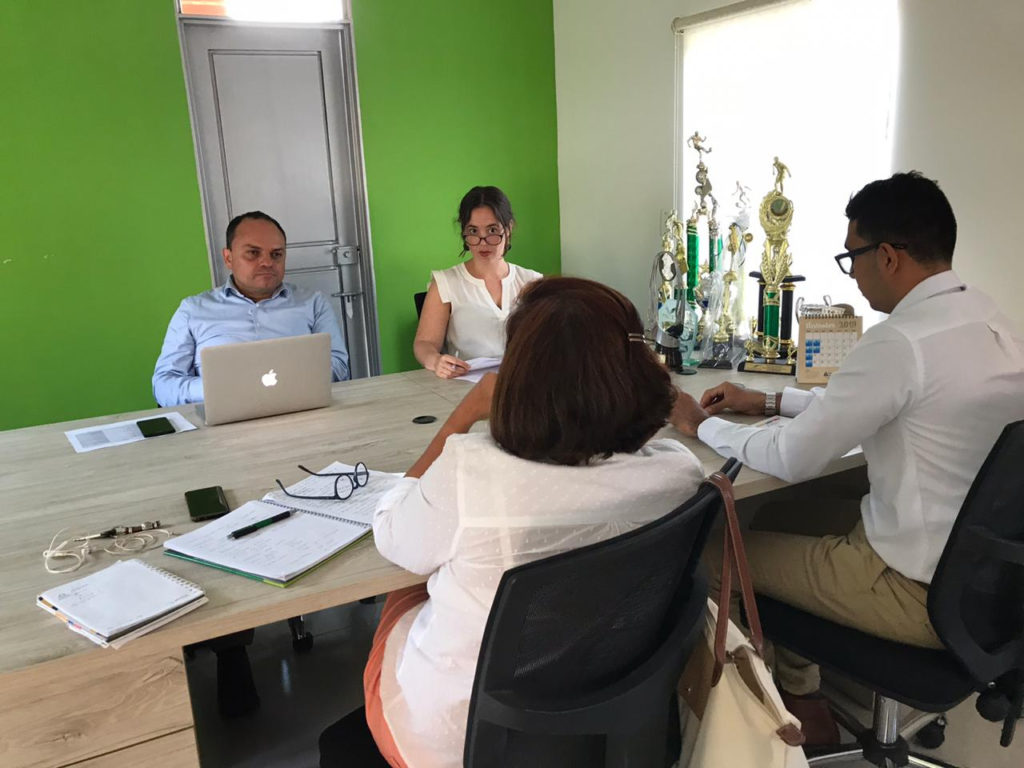Editor: In this article, the EcoProMIS Monitoring and Evaluation specialist explains how and why we are measuring the impact of our rice and oil palm project in Colombia. Written by Elizabeth Sweitzer, CIAT.
Often in the realm of research for development there is a tendency to focus on results. Indeed, this is the focus of results-based management (RBM), arguably the leading management methodology for international development. In an effort to uphold accountability and transparency (especially in the face of fiscal austerity), RBM defines clear results and products and demonstrates how interventions achieve those results.
But results are just the beginning. Results tell us what products and services the project provided. In order to tell the full story, we also need consider how these results generate and sustain impact. Impact on the other hand explains the changes in behavior we see as a result of those products and services, and how they contribute to holistic improvements for individuals, communities and landscapes.
Why measure impact?
Simply put: we want to tell the full story.
It’s one thing to report on the number of farmers that participated in EcoProMIS trainings – a result. When we measure or forecast impact, we explain how those farmers used those trainings to improve their productivity and livelihoods. We learn about how knowledge services shared on mobile applications help to improve on-farm management decisions. We can estimate how financial savings amongst farmers help improve gender equity, household nutrition, and education outcome.
And that’s where I come in. I’m Elizabeth Sweitzer, the Monitoring and Evaluation Specialist for EcoProMIS. Known by most as an “M&E Specialist”, my work revolves around assessing performance. I am based at CIAT in Cali, Colombia. I help EcoProMIS measure the progress of interventions, the efficacy of knowledge services we provide to farmers, and more to help tangibly understand results and impact.
My work also helps us understand the nature of results, for example were they positive or negative? Intended or unintended? What was learned in the process, what will we change moving forward? In doing so, I help to understand, forecast or even measure the impact of the project.
How do we measure impact?
During the project, we keep robust monitoring systems verified by a ‘logframe’ (logical framework) to test the attainment of our results. Process evaluations keep track of how we are doing, and provide opportunity to pivot course where needed. Learning questions are defined and keep us on our feet, helping us reflect. We also plan to be able to tell the “happily ever after”, by developing plans to measure the sustained impact of our interventions, how people change over time and what practices they truly adopt and make habit of.

Measuring impact with EcoProMIS
Working alongside a team of researchers, implementers, managers, extension agents and more, we work to find dynamic tools and mechanisms to measure this impact for a number of different stakeholders. As EcoProMIS is made up of a dynamic team of specialists with backgrounds in socio-economic, environmental, business, and management backgrounds, we possess dynamic ways of measuring impact.
Our metrics come from a host of different qualitative and quantitative studies, and are promoted by an idea that iterative monitoring and evaluation is essential throughout the project lifecycle and even after. We look forward to measuring lasting impact and helping farmers develop sustainable, profitable, and productive lifestyles.